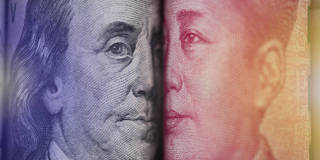The real problem with the phase one accord announced on October 11 is the basic structure of the deal into which it presumably fits. From trade to currency, the approach is the same – prescribing bilateral remedies for multilateral problems.
NEW HAVEN – Dealmakers always know when to cut their losses. And so it is with the self-proclaimed greatest dealmaker of them all: US President Donald Trump. Having promised a Grand Deal with China, the 13th round of bilateral trade negotiations ended on October 11 with barely a whimper, yielding a watered-down partial agreement: the “phase one” accord.

NEW HAVEN – Dealmakers always know when to cut their losses. And so it is with the self-proclaimed greatest dealmaker of them all: US President Donald Trump. Having promised a Grand Deal with China, the 13th round of bilateral trade negotiations ended on October 11 with barely a whimper, yielding a watered-down partial agreement: the “phase one” accord.